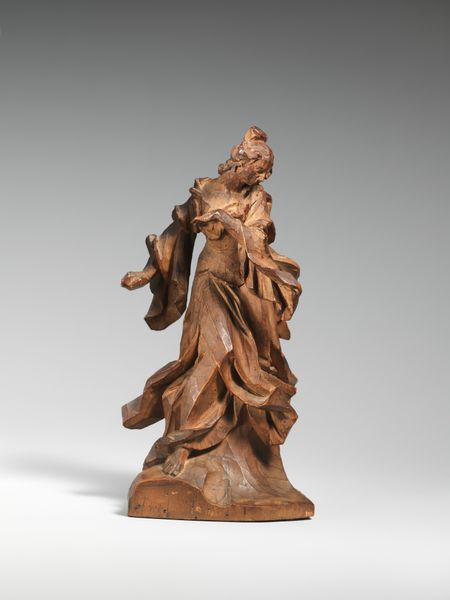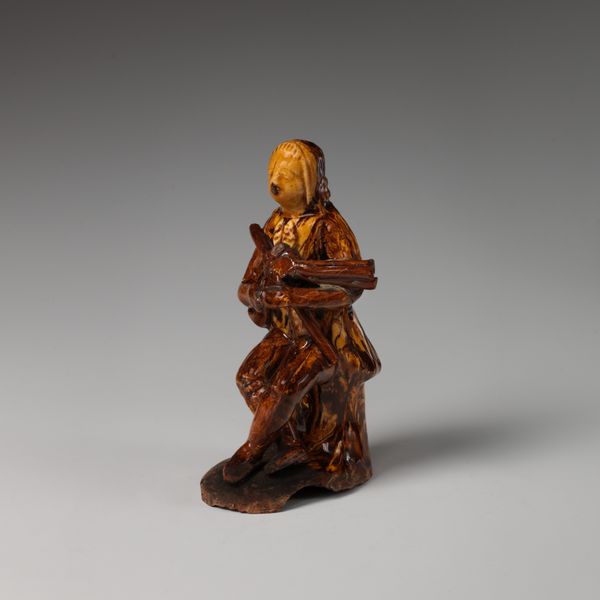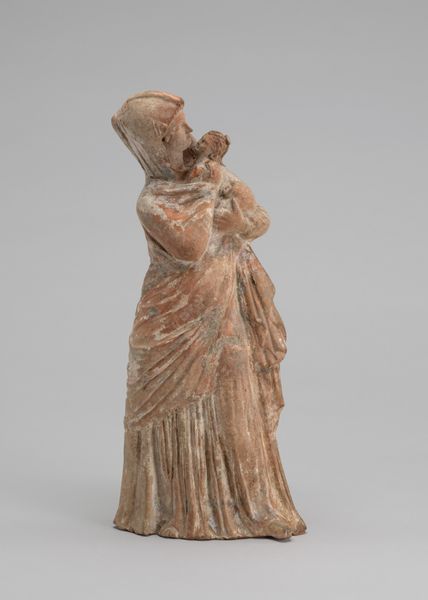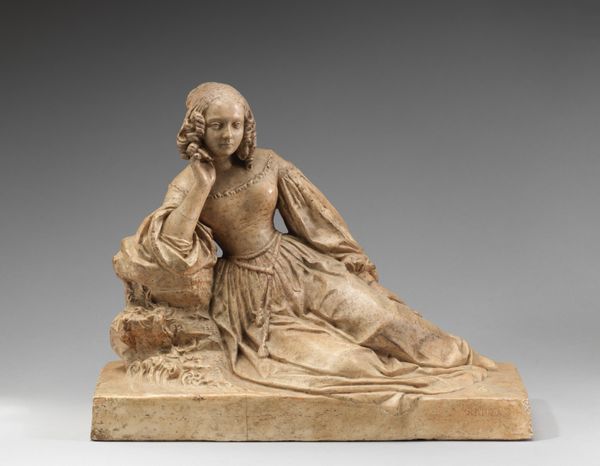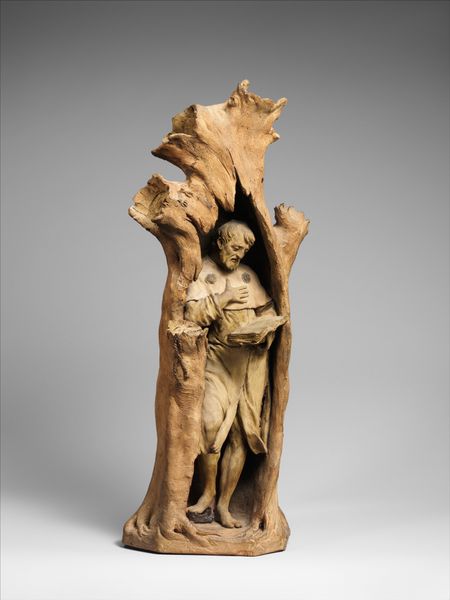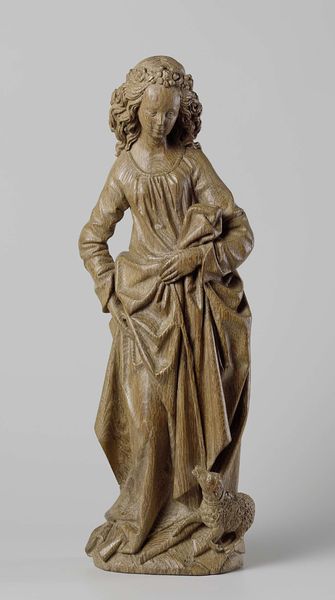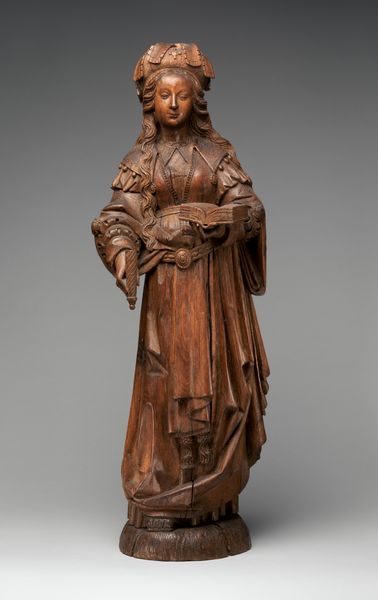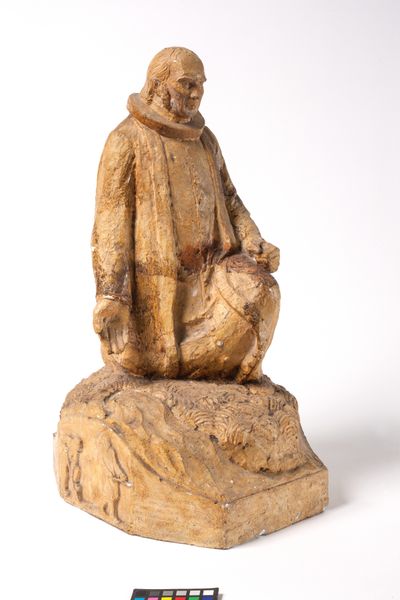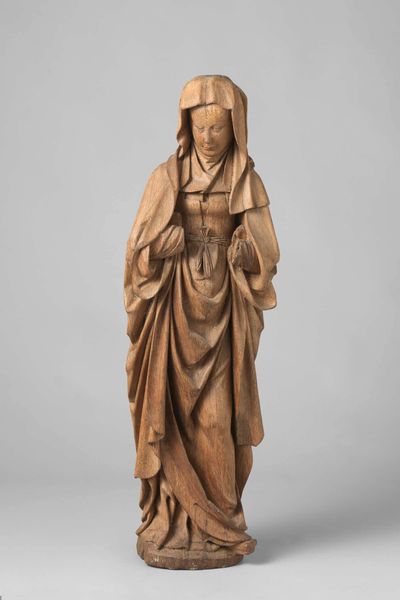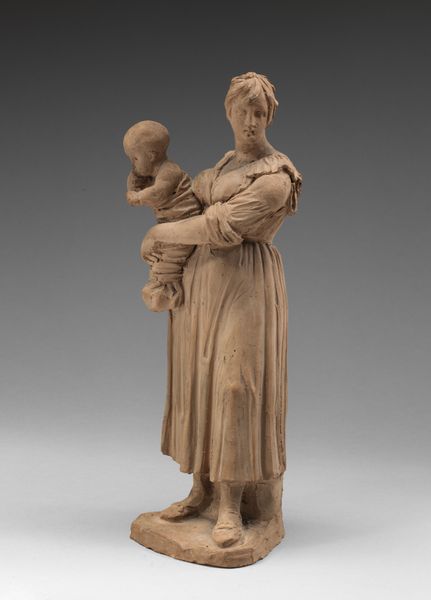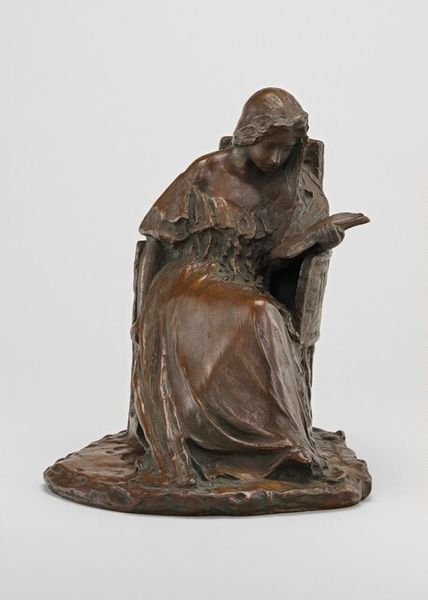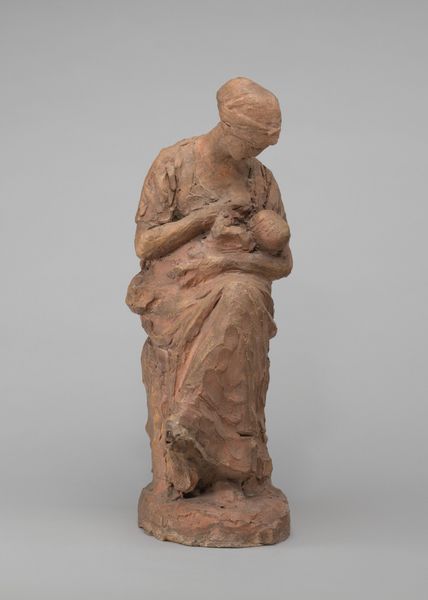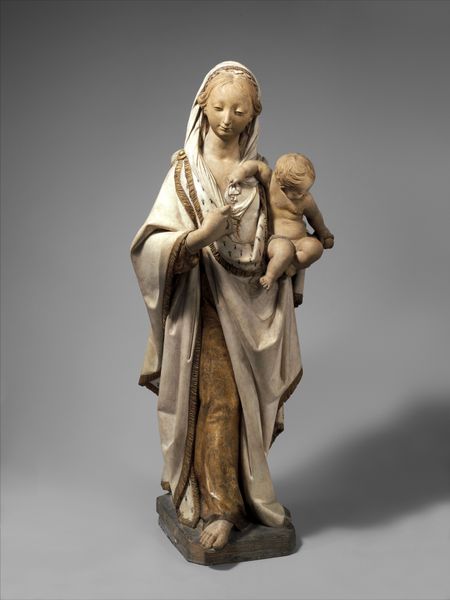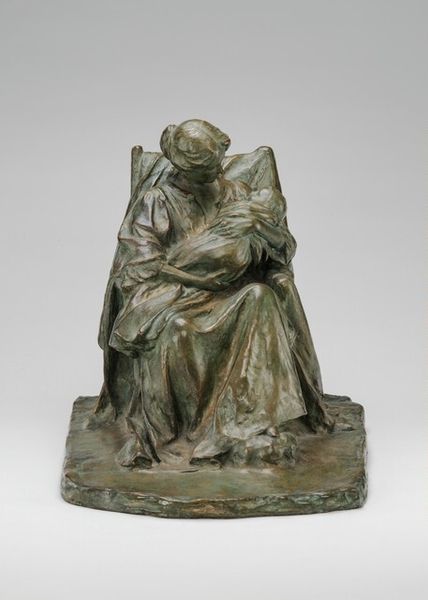
ceramic, sculpture
#
portrait
#
sculpture
#
ceramic
#
classical-realism
#
figuration
#
sculpture
#
decorative-art
#
realism
Dimensions: 22 5/8 × 17 5/16 × 18 7/8 in. (57.5 × 44 × 48 cm)
Copyright: Public Domain
Editor: Right now, we're standing in front of "The Infanta," a ceramic sculpture crafted sometime between 1885 and 1899 by Jean-Joseph Carriès. There's something both incredibly sweet and slightly melancholy about this piece. She’s holding this small object, her gaze downcast... What's your take on this little one? Curator: Ah, yes, Carriès’ Infanta. Don't you feel immediately drawn to the tenderness radiating from this sculpture? For me, it’s as if the clay itself softens, mirroring the fragility and ephemeral nature of childhood. See how the muted tones and almost blurred details create this dreamlike effect? I find myself wondering, what's she dreaming about? Is it a happy one? Editor: I do notice that! Is that dreaminess something he was known for? Curator: Absolutely! Carriès had a knack for infusing his sculptures with such palpable emotion. He often played with surface textures and light to create a mysterious, symbolic atmosphere. It’s decorative, and even evokes a classical realism, but I think we can see, at the heart of the piece, a realism seeking more, seeking a way to touch the viewer. Do you get that sense, too? Editor: Definitely. It's not just a sculpture, it's a feeling. A bittersweet one. It’s fascinating how the choice of material contributes to that mood. It almost feels alive in its imperfection. I never would have noticed that without you pointing it out! Curator: That's what's so rewarding about truly engaging with art isn't it? It's not just looking, it's feeling and connecting, letting the artwork speak to something deeper within you.
Comments
No comments
Be the first to comment and join the conversation on the ultimate creative platform.
